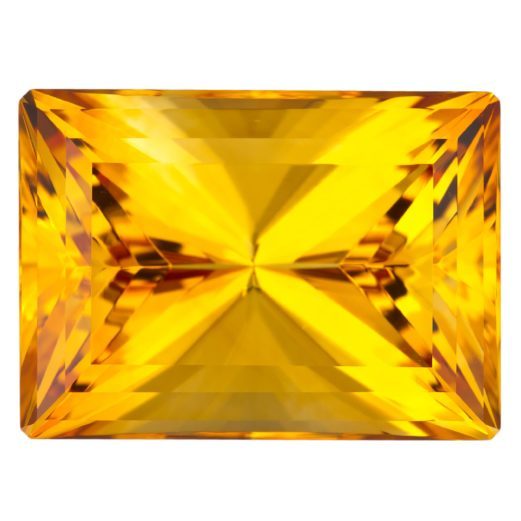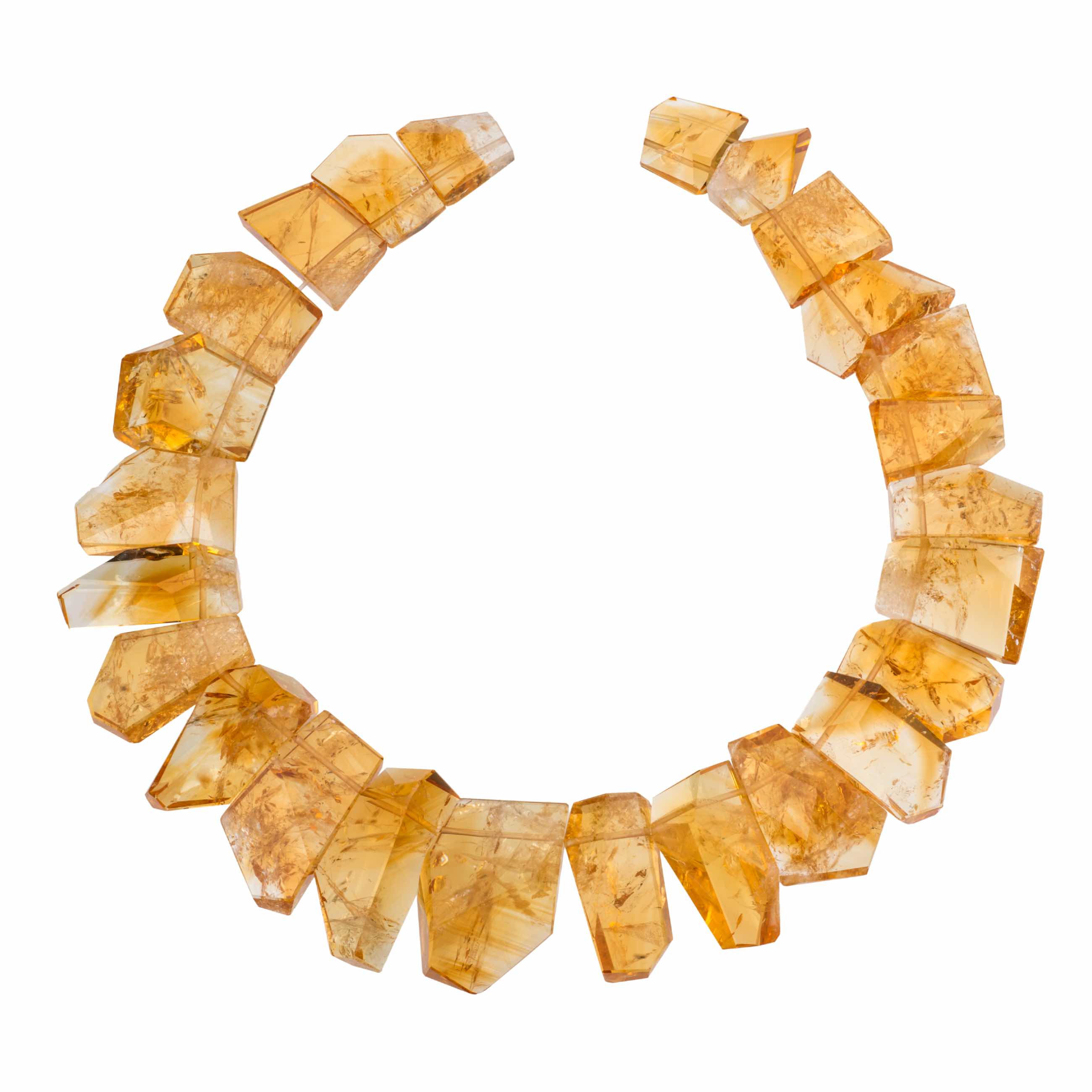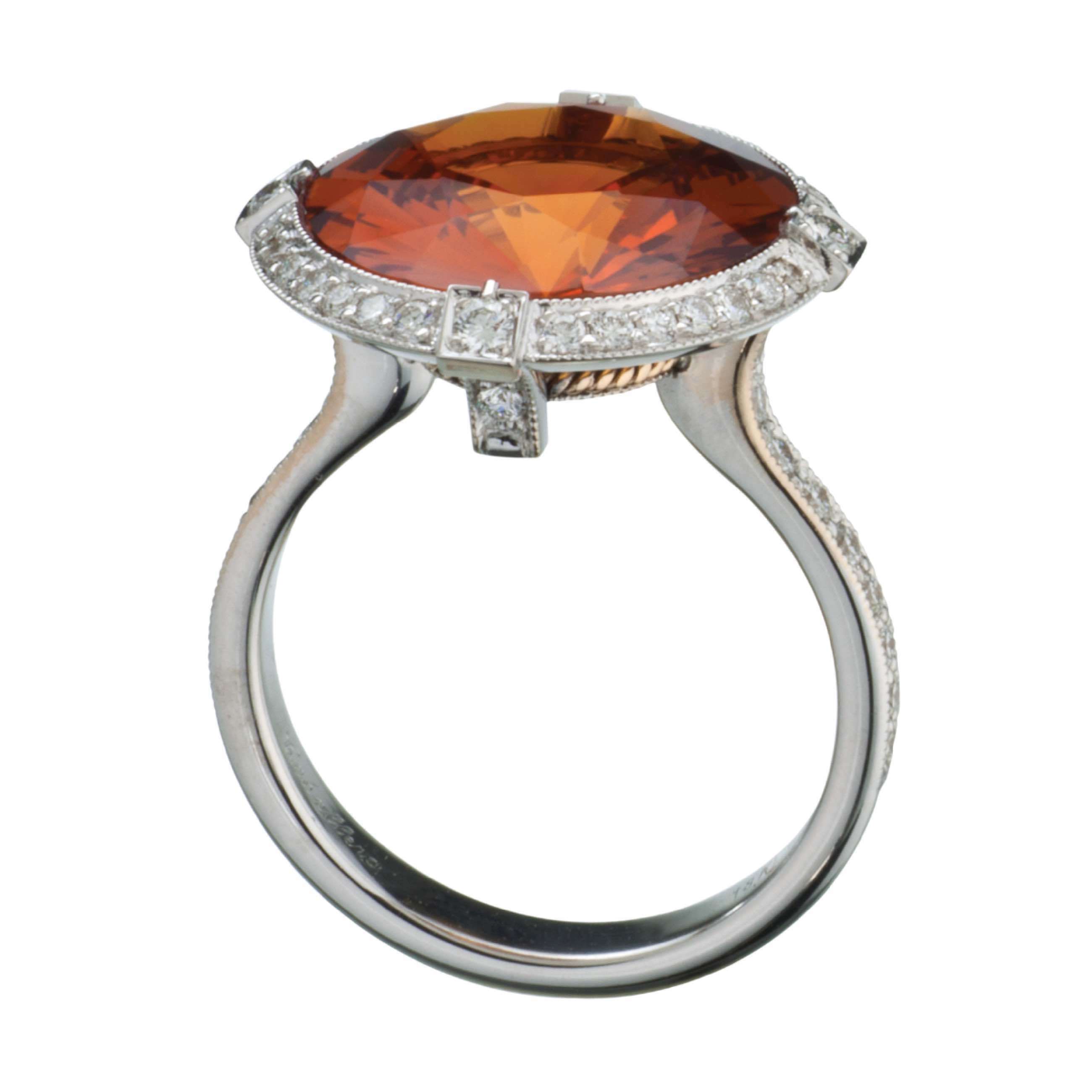
CITRINE: November Birthstone

ROMANCE, HISTORY & LORE
With its warm, golden glow, citrine has long been treasured as a gift from the sun. A variety of transparent quartz, citrine is named after “citron,” the French word for lemon. In ancient times, the gemstone was carried as a protection against snake venom and evil thoughts.
More recently, citrine was enormously popular in jewelry of the 1940s. Its sunny color and dramatic proportions suited the streamlined style and bold gold of the era. It was often set with ruby, peridot, and aquamarine in colorful brooches, necklaces, and bracelets.

ORIGINS
Most citrine is mined in Brazil, particularly the state of Rio Grande do Sul. Additional deposits are mined in Zambia.

SELECTING A STONE
Citrine is the most affordable of the earth-toned gemstones. Its lemony luster is the perfect complement to warm colors, and offers a striking contrast against black, gray, and blue.
Like all quartz gems, citrine is relatively plentiful, and available in a wide range of sizes and shapes. Modern jewelry designers still love to set citrine in yellow gold, either alone or in combination with amethyst, blue topaz, or peridot.
Citrine was once referred to as “topaz quartz,” but because topaz is unrelated, the gemstone industry has ruled to eliminate this nomenclature.


ENHANCEMENTS
Brown-toned citrine is heat-treated to elicit a vibrant yellow-orange hue. This enhancement method is permanent, and will last for the life of the gemstone.
Additionally, many citrines begin their lives as amethyst. After gentle heating, the characteristic purple gives way to a golden yellow.
As with all gemstones, any heat treatment should be disclosed on the stone’s bill of sale.
CARE
Like other quartz gems, citrine is durable and great for everyday wear. For safe cleaning, wash citrine jewelry in a solution of mild dish soap and warm water, using a soft brush to scrub behind the stone where dust can collect. Like all fine jewelry, citrine should be removed before sleeping.



